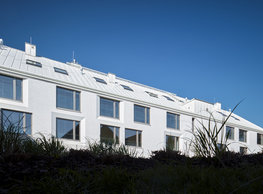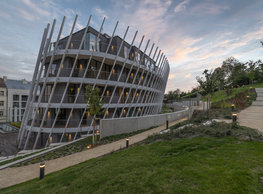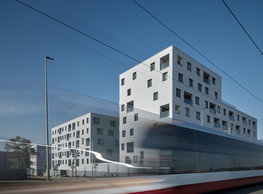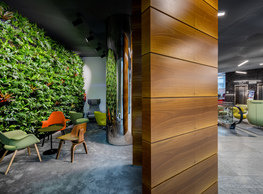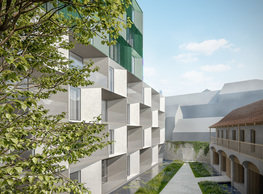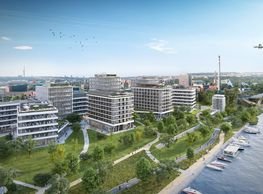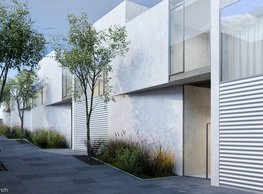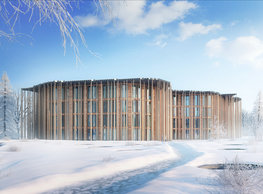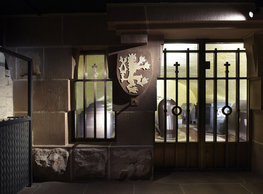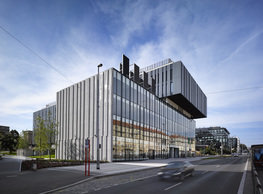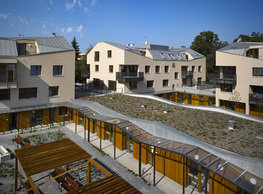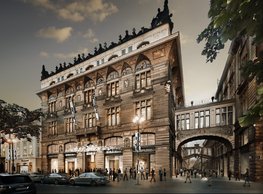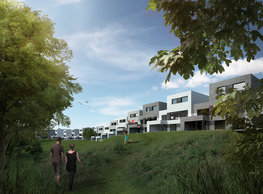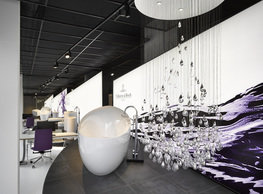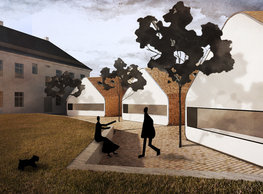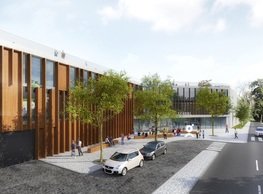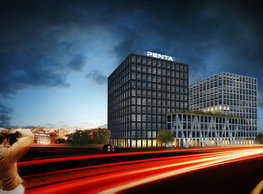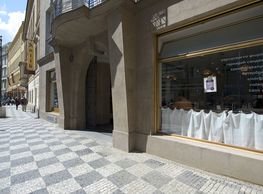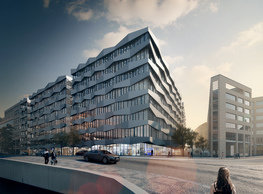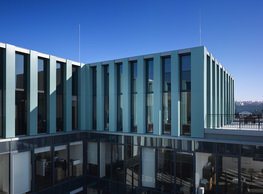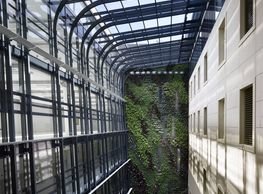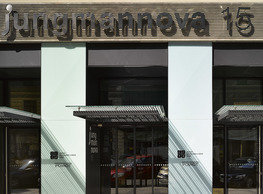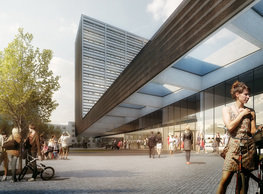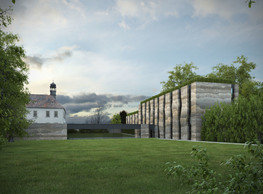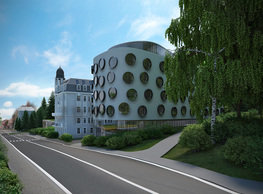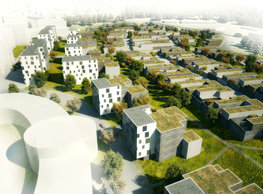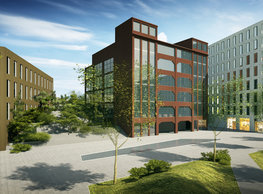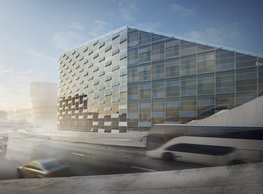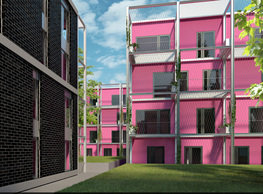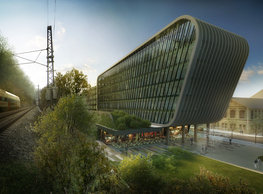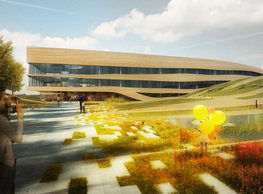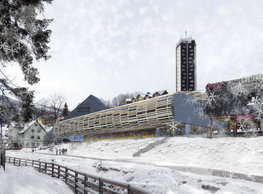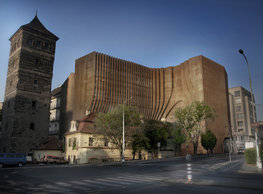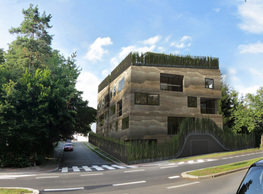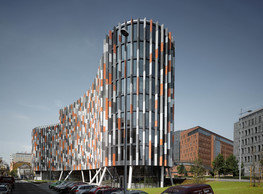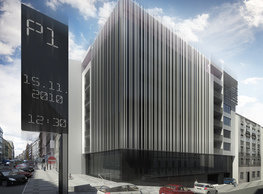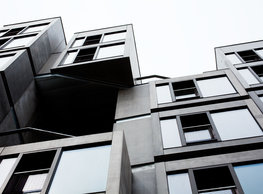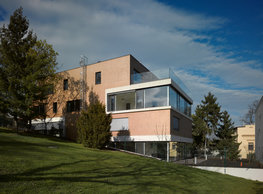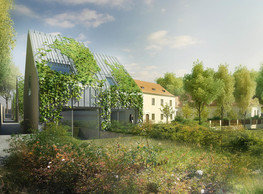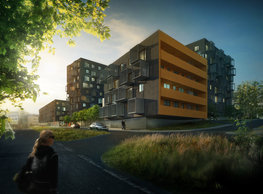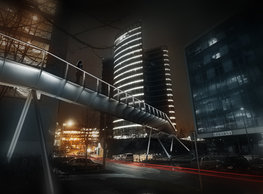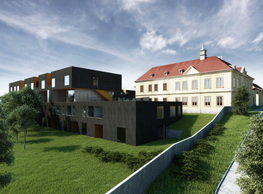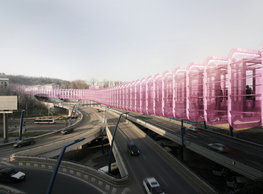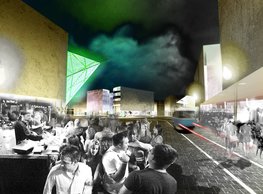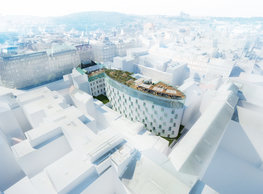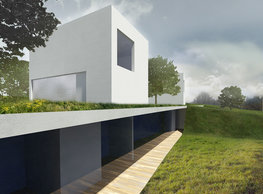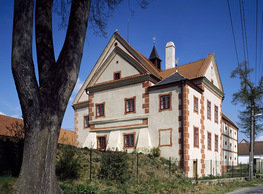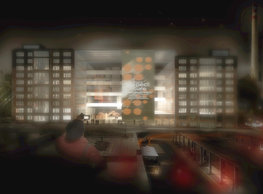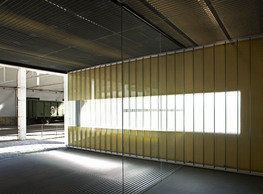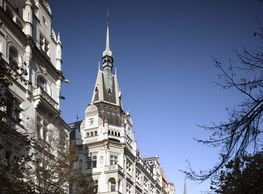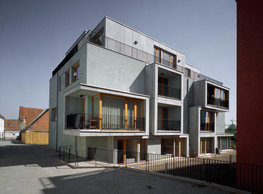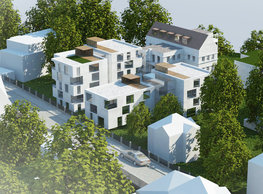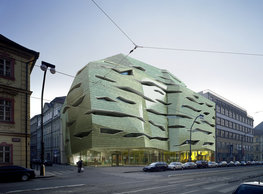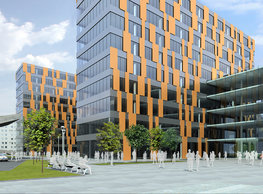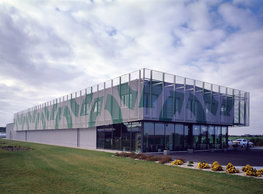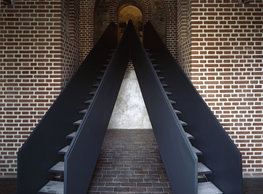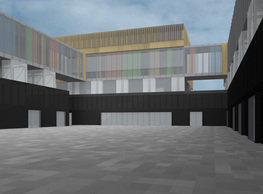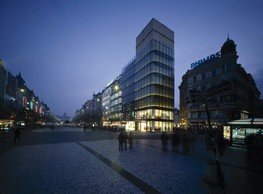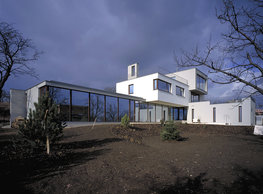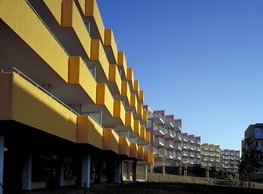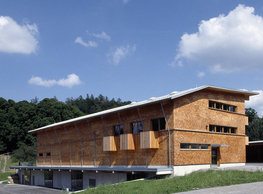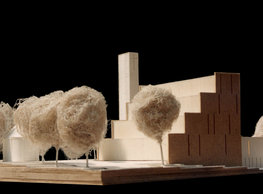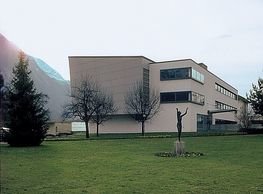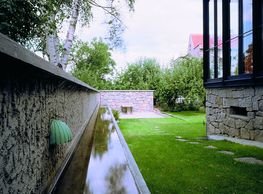A thorough retrofitting of the old building to which adjoins the new addition is designed to meet the specific needs of accommodated guests fully. It is not a standard hotel but rather a medical, curative facility whose goal is not to accommodate guests but to provide renowned balneotherapeutic care associated with the place for several centuries. The linage of our design to the existing development concept is one of the new design's crucial starting points. New blocks' scale and composition support the already implemented concept of detached bathhouses, lone buildings formed by street lines. At the same time, we consider the integration into the town's overall urbanistic structure and harmony with the building's surroundings as an essential base point of our design. That is why by implementing it, we support the exploitation of the location's natural parameters by this approach – the orientation to the views to the town, the use of the existing road network emphasizing the natural differentiation of pavements from roads, the use of the site's natural terrain morphology and, last but not least, the rehabilitation and integration of the old bathhouse. The elementary outline of the designed buildings' architecture is mainly based on traditional conditions typical for the given location. We believe that the original Metropol bathhouse, whose façade will be carefully restored with its original details, should remain the entire bath complex's main feature – a sort of the location's logo. That is why the scale, heigh and architecture of the new blocks entirely subordinate to the existing building. The adjacent terrain's morphology and the plot's shape initiated the design of organic forms of the mixed-use pedestal that is suppressed into the secondary plan in contact with the old house to disturb its silhouette as little as possible. The new block with guestrooms levitates above a partly transparent façade of the mixed-use pedestal. Its elementary, simple, and entirely utilitarian organic form is rhythmed by circular windows. Round shapes and the fact that viewers perceive only four storeys visually decrease the scale of an otherwise spacious segment. The façade, having no disturbing details and seemingly dimensionless, is visually arranged to play a background role for the original bathhouse.
portfolio
![]()
monastery of st. gabriel
![]()
nová zbrojovka block g
![]()
nad krocínkou a
![]()
nad krocínkou b
![]()
dobřichovice farmstead
![]()
nymburk train station
![]()
stará boleslav primary school
![]()
holečkova 26 residence
![]()
komořany elementary school
![]()
kindergarten jeseniova
![]()
nová elektra residence
![]()
filadelfie bldg. – the new reception
![]()
písnice elementary school
![]()
bytové domy vítězná/újezd
![]()
afi vokovice
![]()
showroom elite bath/bulthaup sk
![]()
port 7
![]()
main point pankrác
![]()
oktáva houses
![]()
lesy čr headquarters
![]()
royal tomb
![]()
the blox
![]()
dob centre in dobřichovice
![]()
contemporary glass muzeum
![]()
pod hády brno
![]()
elite bath showroom karlín
![]()
communal flats in dolní břežany
![]()
šantovka residence
![]()
open gate II
![]()
ružinov office building
![]()
dlouhá palace
![]()
vinohradská 8
![]()
masarykovo railway station
![]()
retail and office development
![]()
jindřišská 16
![]()
jungmannova 15
![]()
regina hradec králové
![]()
chateau dolní břežany
![]()
the metropole hotel in mariánské lázně (marienbad)
![]()
waltrovka
![]()
square mechanica
![]()
porto mercandini
![]()
plzeňská 18
![]()
vrchlického residence
![]()
karlín railway
![]()
science research centre
![]()
sněžka apartment house
![]()
novomlýnská brána
![]()
jeremenkova residence
![]()
main point karlin
![]()
flat b3 prague
![]()
štěpánská 47
![]()
tenement house with a gym
![]()
švédská residence
![]()
hendlův dvůr
![]()
klamovka residential complex
![]()
botanica vidoule phase 6
![]()
footbridge in bb centre
![]()
perníkářka manor
![]()
municipal interventions prague 2010
![]()
černá louka ostrava
![]()
evropa hotel
![]()
bb centrum filadelfie
![]()
family houses in radotín
![]()
cherubín II
![]()
fc bohemians praha 1905
![]()
ostrolovský újezd chateau
![]()
zlín cultural centre
![]()
znojemská hospice
![]()
pilsner urquell
![]()
st. wenceslas exposition
![]()
institute of noblewomen
![]()
karlov office building
![]()
cherub I
![]()
pařížská 9
![]()
jinonice villa park
![]()
petynka hotel
![]()
sanopz residential complex
![]()
viktoria center pankrác
![]()
hotel crystal palace
![]()
invalidovna offices
![]()
performing arts center seoul
![]()
boscolo carlo IV hotel
![]()
toner recycling company building
![]()
the story of prague castle
![]()
umprum in prague-ďáblice
![]()
mrázovka apartment villa
![]()
school gym in prague-troja
![]()
roma hotel
![]()
euro palace
![]()
ten centuries of architecture
![]()
villa třešňovka
![]()
velká skála
![]()
sternberg palace prague castle
![]()
st. nicholas church in čečovice
![]()
olga and václav havel's villa
![]()
tierpark langenberg
![]()
a church in neratovice
![]()
school centre interlaken
![]()
forestry school in lyss
![]()
villa dobeška
![]()
tuscany in maps




